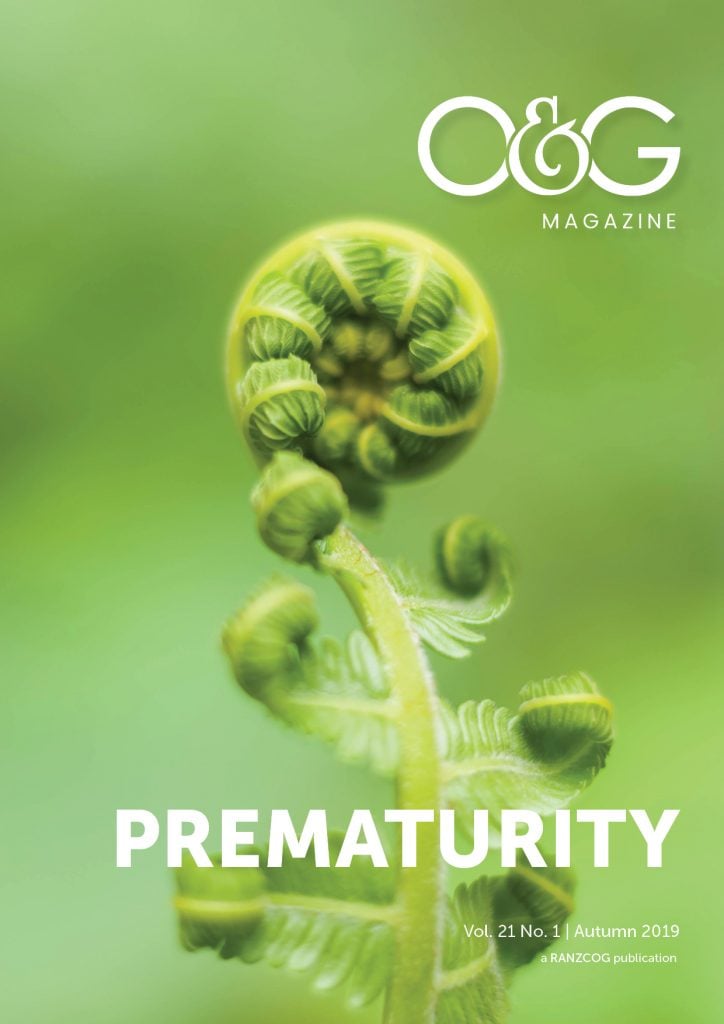Infants born at 34+0 to 36+6 weeks gestation are referred to as late preterm (LP).1 Over recent years, the number of infants delivered in this LP gestation has increased around the globe.2 The reasons for this increase have been a subject of intense debate on how best to reduce LP births.3 One should remember that all LP births are not preventable. Various medical conditions, such as presence of congenital anomalies, pre-eclampsia, gestational diabetes and growth concerns on serial antenatal ultrasounds, either spontaneously result in LP birth or prompt induction at this gestation to minimise further fetal compromise in utero.4 Thus, the LP population is diverse and heterogeneous.
Very preterm infants (born earlier than 32 weeks gestation) and those with a birthweight of less than 1500g are often considered at high risk of developmental problems and a regular follow up at four, eight, 12 and 24 months of corrected age is recommended to identify developmental problems at the earliest.5 LP infants, being slightly more mature, are considered to be of low risk. Hence, no formal developmental follow-up schedule is routinely in place for them. This leaves LP infants in a vulnerable situation with any problems only identified late in childhood. Gestational age is a continuum and recent reports have suggested a higher risk of neurodevelopmental abnormalities experienced by LP infants compared with infants born at term.6 LP infants are at a higher risk of experiencing hospitalisation-related complications in the neonatal period and in early infancy.7 However, one needs to be aware that the studies are heterogeneous and the results need to be interpreted with caution. Some of the complications are discussed below.
LP infants and neurodevelopmental delay
Recent reports suggest that LP infants experience higher risk of neurodevelopmental delay compared with term infants at various stages of childhood, including early infancy.8 Assessment of developmental delay is generally carried out using parent-completed screening questionaries, such as Ages and Stages or standardised objective confirmatory testing, such as Griffith test, Baileys test, Welscher’s intelligence scales and so forth. Morag et al reported that LP infants demonstrated low scores compared with term infants when tested at 12 months of actual age.9 When tested at 12 months of corrected age, LP infants caught up with term infants.10
Nepomnaschay et al tested the cognitive abilities of 400 LP infants at two years of age using the short form of Baileys test and compared the results with 5050 term infants. The authors reported that the risk of LP infants experiencing scores of less than one standard deviation was comparable with term infants.11
Wolthaler et al tested 1200 LP infants using Baileys test at 24 months of age and compared the results with 6300 term infants. LP infants, compared with term infants, had lower mental (85 versus 89) and psychomotor development indices (88 versus 92) both P <0.0001 respectively. A higher proportion of LP infants experienced developmental delay compared with term infants with an adjusted odds ratio (95% CI) of 1.52 (1.26–1.82).12
At six years of age, using Welschers’s scale of intelligence, Talge et al reported that LP infants were twice as likely to experience IQ scores of below 85, with a full scale IQ (95% CI) of 2.35 (1.20–4.61).13
Using linked data, Petrini et al studied more than 8000 LP infants and compared the diagnosis of developmental delay with more than 130,000 term infants. The observed risk of developmental delay diagnosed using ICD 9 code was 12.2 versus 9.2 per 1000 live births in LP versus term infants. The adjusted OR (95% CI) for developmental delay in LP infants was 1.36 (1.11–1.66). However, information on other contributing factors, such as the age at diagnosis, medical conditions at birth and neonatal comorbidities, were not reported.14
In a recent systematic review, Chan et al reported that LP infants demonstrated an increased risk of lower cognitive ability scores at school age.15 The differences in cognitive outcomes persisted until adulthood, with term infants performing at five per cent higher of a standard deviation than LP cohorts.16
LP infants have also been shown to experience higher risk of delays in gross motor and speech milestones.17 18 Morag et al studied the gross motor milestones at six and 12 months using Alberta infant motor scales and Griffiths test and compared them with term infants. The authors reported that LP infants consistently experienced lower scores when compared with term infants.19 Similarly, speech evaluation using parent-completed screening questionnaires identified increased risk of speech delay under the age of 36 months.20 21 Brown et al reported that, at five years of age, the rate of receptive vocabulary delay in four to five year olds was 13.1 per cent in LP and 12.7 per cent in full term, with an adjusted relative risk (95% CI) of 1.06 (0.79–1.43).22 Despite being statistically non-significant, it appears that LP infants experience increased speech and language difficulties in the early years of life.
LP infants and early intervention
With a higher need for therapy services arising due to early neurodevelopmental delays, LP infants are more likely to need early intervention services. Shappiro-Mendoza et al reported on the need for early intervention services using data linkage from a birth cohort in Massachusetts.23 The cohort that consisted of 554,974 singleton infants born during 1998 through 2005, and survived the neonatal period, were followed until the third birthday of each infant. The prevalence of early intervention program enrollment increased with each decreasing week of gestation before 41 weeks; 23.5 per cent of enrolments were LP, and 11.9 per cent of enrolments were term.24 Kalia et al studied the early intervention enrolments in New York and compared the outcomes with very preterm infants born before 32 weeks. After controlling for comorbidities of prematurity, the authors found that LP infants requiring admission to the neonatal unit have the same risk of requiring interventional therapies as very preterm infants.25
LP infants also experience higher risk of cerebral palsy (CP) diagnosis as reported by Petrini et al at five years of age11 and Hirvonen et al at seven years of age.16 Petrini reported three times the risk11 while Hirvonen reported twice the risk of CP when compared with term infants.16 LP infants whose neonatal course was complicated by the need for resuscitation, presence of intracranial haemorrhages increased the risk of CP diagnosis.26 Recent reports have also suggested that LP infants experience higher risk of attention deficit hyperactivity disorder (ADHD) diagnosed at school age using standard assessments.27 However, more evidence is needed before any causal association between LP infants and ADHD can be established.28 29
Conclusion
Thus, studies that reported the cognitive, gross motor and speech outcomes of LP infants have provided inconsistent results, with some authors demonstrating a tendency to catch up by five to six years of age. While some LP infants seem to catch up, some infants continue to experience persistent developmental and cognitive delays beyond early childhood. It is not certain which category of LP infants experience persistent deficits. One needs to remember that various factors, such as the condition at birth, presence of congenital anomalies, growth status of the infant, neonatal course, presence of lesion such as intraventricular haemorrhage, contribute towards the developmental and cognitive outcome of the infant. Age at diagnosis, the type of test used and exposure to early intervention also affect the eventual result. Limited evidence suggests that it is not only the degree of prematurity but also the morbidities experienced in the neonatal period that contribute to adverse neurodevelopmental outcomes. Given the large number of patients in this category, it is not feasible to follow up all LP infants in neurodevelopmental follow-up clinics. Hence, more research is needed to understand the subgroup of LP infants who would benefit from close monitoring post discharge from the neonatal care unit.
References
- Engle WA. A recommendation for the definition of ‘late preterm’ (near-term) and the birth weight-gestational age classification system. Semin Perinatol. 2006;30(1):2-7.
- Shapiro-Mendoza CK, Lackritz EM. Epidemiology of late and moderate preterm birth. Seminars in fetal & neonatal medicine. 2012;17(3):120-5.
- Cheong JL, Doyle LW. Increasing rates of prematurity and epidemiology of late preterm birth. J Paediatr Child Health. 2012;48(9):784-8.
- Cheong JL, Doyle LW. Increasing rates of prematurity and epidemiology of late preterm birth. J Paediatr Child Health. 2012;48(9):784-8.
- NICE guideline [NG72]. Developmental follow-up of children and young people born preterm. 2017. Available from www.nice.org.uk/guidance/ng72.
- Chan E, Leong P, Malouf R, Quigley MA. Long-term cognitive and school outcomes of late-preterm and early-term births: a systematic review. Child Care Health Dev. 2016;42(3):297-312.
- Shapiro-Mendoza CK, Lackritz EM. Epidemiology of late and moderate preterm birth. Seminars in fetal & neonatal medicine. 2012;17(3):120-5.
- Poulsen G, Wolke D, Kurinczuk JJ, et al. Gestational age and cognitive ability in early childhood: a population-based cohort study. Paediatric and Perinatal Epidemiology. 2013;27(4):371-9.
- Morag I, Bart O, Raz R, et al. Developmental characteristics of late preterm infants at six and twelve months: a prospective study. Infant Behavior & Development. 2013;36(3):451-6.
- Morag I, Bart O, Raz R, et al. Developmental characteristics of late preterm infants at six and twelve months: a prospective study. Infant Behavior & Development. 2013;36(3):451-6.
- Nepomnyaschy L, Hegyi T, Ostfeld BM, Reichman NE. Developmental outcomes of late-preterm infants at 2 and 4 years. Maternal and Child Health Journal. 2012; 16(8):1612-24.
- Woythaler MA, McCormick MC, Smith VC. Late preterm infants have worse 24-month neurodevelopmental outcomes than term infants. Pediatrics. 2011;127(3):e622-9.
- Talge NM, Holzman C, Wang J, et al. Late-preterm birth and its association with cognitive and socioemotional outcomes at 6 years of age. Pediatrics. 2010;126(6):1124-31.
- Petrini JR, Dias T, McCormick MC, et al. Increased risk of adverse neurological development for late preterm infants. The Journal of Pediatrics. 2009;154(2):169-76.
- Chan E, Leong P, Malouf R, Quigley MA. Long-term cognitive and school outcomes of late-preterm and early-term births: a systematic review. Child Care Health Dev. 2016;42(3):297-312.
- Chan E, Leong P, Malouf R, Quigley MA. Long-term cognitive and school outcomes of late-preterm and early-term births: a systematic review. Child Care Health Dev. 2016;42(3):297-312.
- Morag I, Bart O, Raz R, et al. Developmental characteristics of late preterm infants at six and twelve months: a prospective study. Infant Behavior & Development. 2013;36(3):451-6.
- Nepomnyaschy L, Hegyi T, Ostfeld BM, Reichman NE. Developmental outcomes of late-preterm infants at 2 and 4 years. Maternal and Child Health Journal. 2012; 16(8):1612-24.
- Morag I, Bart O, Raz R, et al. Developmental characteristics of late preterm infants at six and twelve months: a prospective study. Infant Behavior & Development. 2013;36(3):451-6.
- Nepomnyaschy L, Hegyi T, Ostfeld BM, Reichman NE. Developmental outcomes of late-preterm infants at 2 and 4 years. Maternal and Child Health Journal. 2012; 16(8):1612-24.
- Stene-Larsen K, Brandlistuen RE, Lang AM, et al. Communication impairments in early term and late preterm children: a prospective cohort study following children to age 36 months. The Journal of Pediatrics. 2014;165(6):1123-8.
- Brown HK, Speechley KN, Macnab J, et al. Mild prematurity, proximal social processes, and development. Pediatrics 2014;134(3):e814-24.
- Shapiro-Mendoza C, Kotelchuck M, Barfield W, et al. Enrollment in early intervention programs among infants born late preterm, early term, and term. Pediatrics. 2013;132(1):e61-9.
- Shapiro-Mendoza C, Kotelchuck M, Barfield W, et al. Enrollment in early intervention programs among infants born late preterm, early term, and term. Pediatrics. 2013;132(1):e61-9.
- Kalia JL, Visintainer P, Brumberg HL, et al. Comparison of enrollment in interventional therapies between late-preterm and very preterm infants at 12 months’ corrected age. Pediatrics. 2009; 123(3):804-9.
- Hirvonen M, Ojala R, Korhonen P, et al. Cerebral palsy among children born moderately and late preterm. Pediatrics. 2014;134(6):e1584-93.
- Lindstrom K, Lindblad F, Hjern A. Preterm birth and attention-deficit/hyperactivity disorder in schoolchildren. Pediatrics. 2011;127(5):858-65.
- Lindstrom K, Lindblad F, Hjern A. Preterm birth and attention-deficit/hyperactivity disorder in schoolchildren. Pediatrics. 2011;127(5):858-65.
- Srinivas Jois R. Neurodevelopmental outcome of late-preterm infants: A pragmatic review. AJGP. 2018;47(11):776-9.





Leave a Reply